Ecosystem Degredation
2.4 Hunger for Resources Leaves Sumatra’s Orangutans Without Homes
Chayli T. Buenger
Orangutans in Sumatra, Indonesia are losing their habitat due to deforestation from palm oil production. What is palm oil and why is its production causing deforestation? What efforts are being implemented to save the orangutan and combat deforestation?
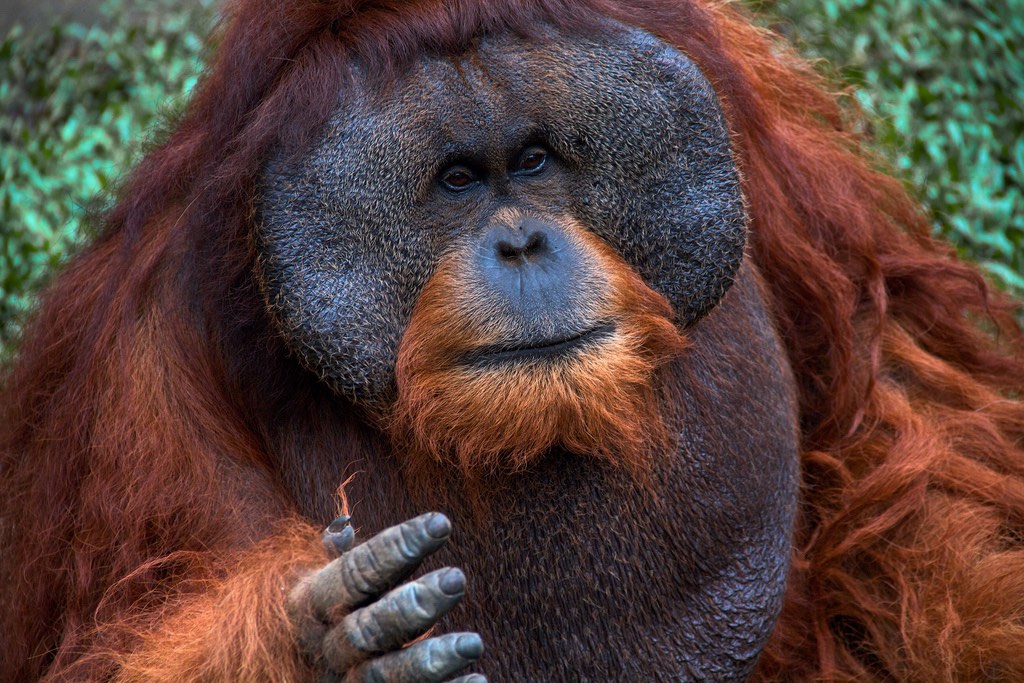
Photograph by Java Bogor, 2010. CC BY-NC-ND 2.0.
The world’s rainforests play a vital role in capturing carbon dioxide, providing habitat to many species of animals, and providing resources for human use. The rainforests in Sumatra, Indonesia are home to many different species, including the Pongo abelii, or the Sumatran orangutan1 (Figure 1 and 2). Deforestation of the Sumatran rainforest is occurring because Indonesia is the world’s largest exporter of palm oil, and to expand palm oil plantations, more land is needed2 (Figure 3). The World Wildlife Fund suggests that 50 percent of Sumatra’s rainforests were decimated from 1985 to 2008.3 This deforestation has greatly damaged the ecosystem. The hope of saving the rainforest remains, as there is ongoing work by both the government and other organizations to prevent further deforestation.
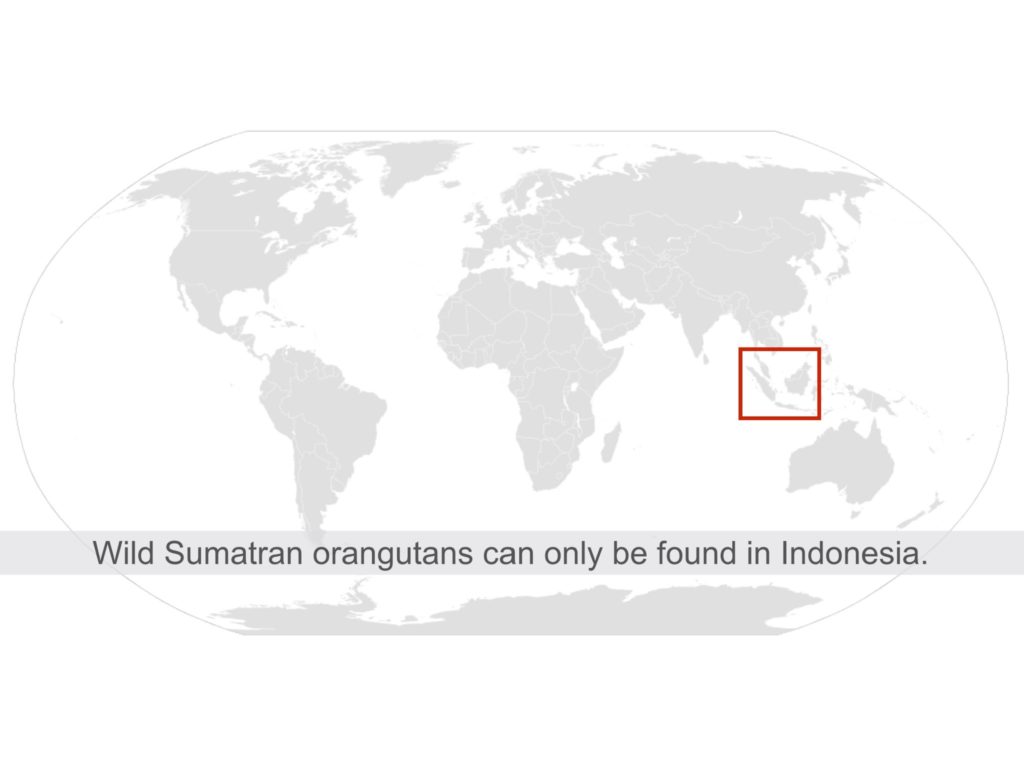
Image modified from anonymous, 2014. Public Domain.
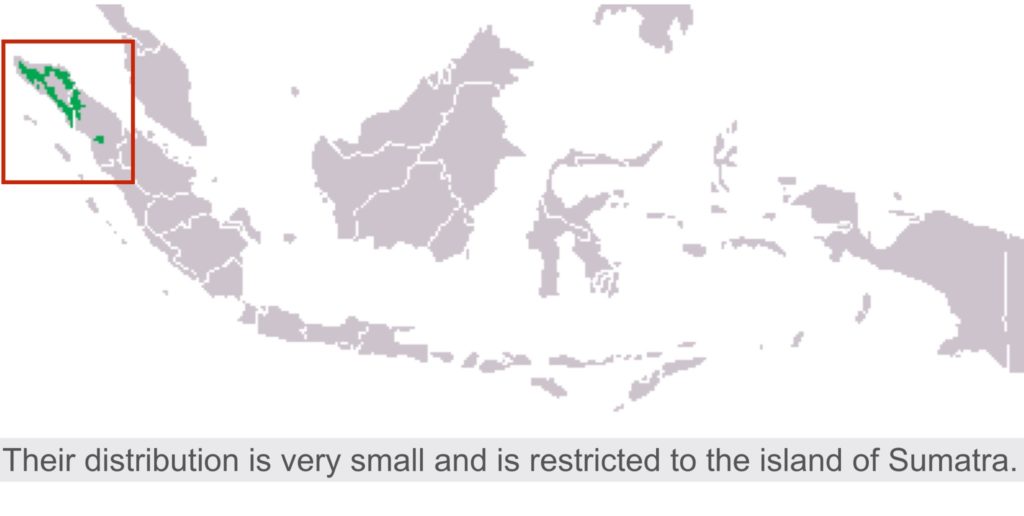
Modified from Udo Schroter, 2010. Public Domain.
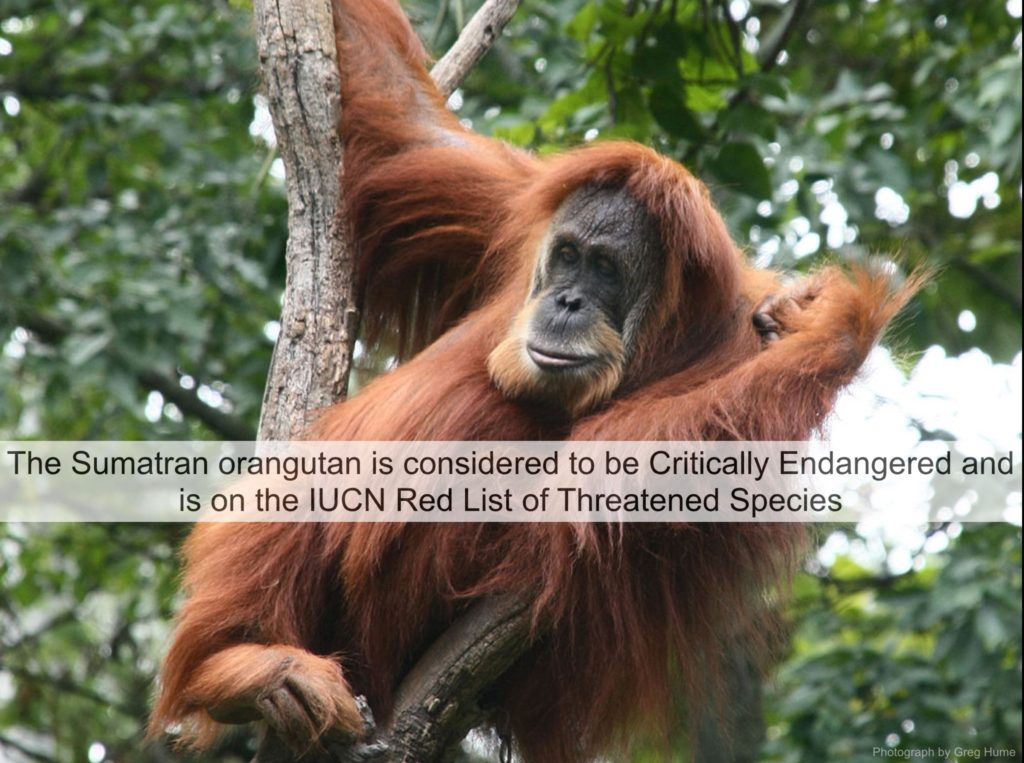
Modified from Greg Hume, 2012. CC BY-SA 3.0.
The demand for palm oil is driven by its versatile properties. Palm oil is used for cooking, and also as a biofuel.4 It is often on the ingredient lists of many processed foods such as cookies, candy, and cereal bars. To feed the world’s increasing demand for palm oil, forests are being cleared to create new space for plantations. This deforestation is occurring primarily in the lowland area, which is the habitat of the orangutans.5 With plans to double their palm oil production by 2020, Indonesia will likely suffer greater deforestation as more rainforest is cleared for the palm oil plantations.6
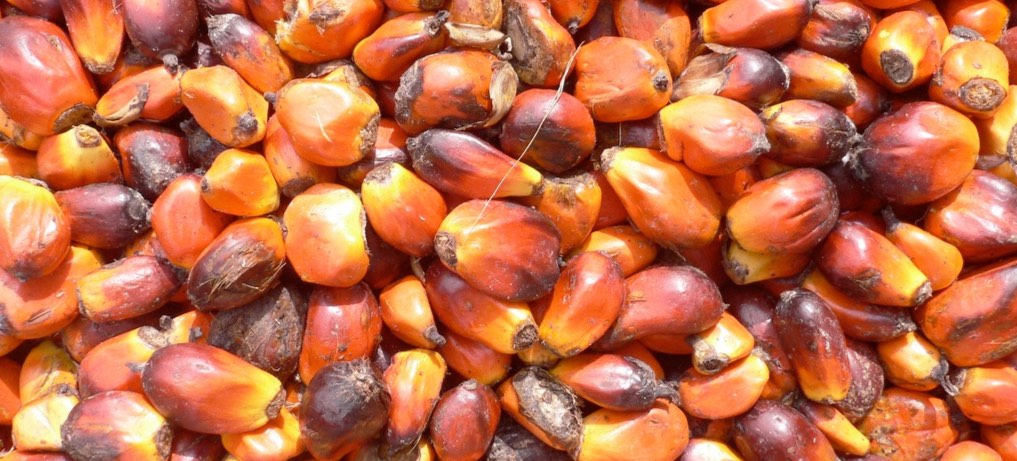
Photograph by oneVillage Initiative, 2008. CC BY-SA 2.0.
Preventing deforestation becomes more difficult considering the circumstances faced by the farmers who grow palm oil. Most farmers will choose to earn extra money rather than preserve the rainforest because these farmers are able to profit from clearing the forest to plant palm trees and also from selling the wood of the cut rainforest trees.5 Tourism is another booming industry in Indonesia which is damaged by deforestation.7
Currently, there are approximately 7,000 Sumatran orangutans remaining in the wild.2 However, the orangutan population continues to decline as their habitat is destroyed. When the rainforest is cleared for palm oil plantations, survival is decreased for female orangutans and their offspring because they unable to move from the deforested areas due to their small home ranges.1 A decline in orangutan population threatens rainforest biodiversity. Orangutans disperse seeds by consuming fruit throughout the forest.5 Therefore, without orangutans to disperse seeds, there will be damaging effects to the rainforest ecosystem.
Research conducted by Pin Koh and other researchers (2011) has mapped deforested areas and areas of palm oil plantations. Palm oil plantations were mapped out with daily MODIS images.8 These images showed that palm oil plantations are contributing to deforestation. The researchers concluded that the remaining untouched forests are at risk, and that reforestation of deforested areas is necessary.8
David Gaveau and his research team (2009) mapped out deforested areas from 1990 to 2006 using Landsat Thematic Mapper (LANDSAT TM), Landsat Enhanced Thematic Mapper (LANDSAT ETM), and satellite images. Their results indicated that greater than eight percent of the land was lost to deforestation and that the percentage is increasing.1 Gaveau also learned that if REDD was implemented, less deforestation would occur.1
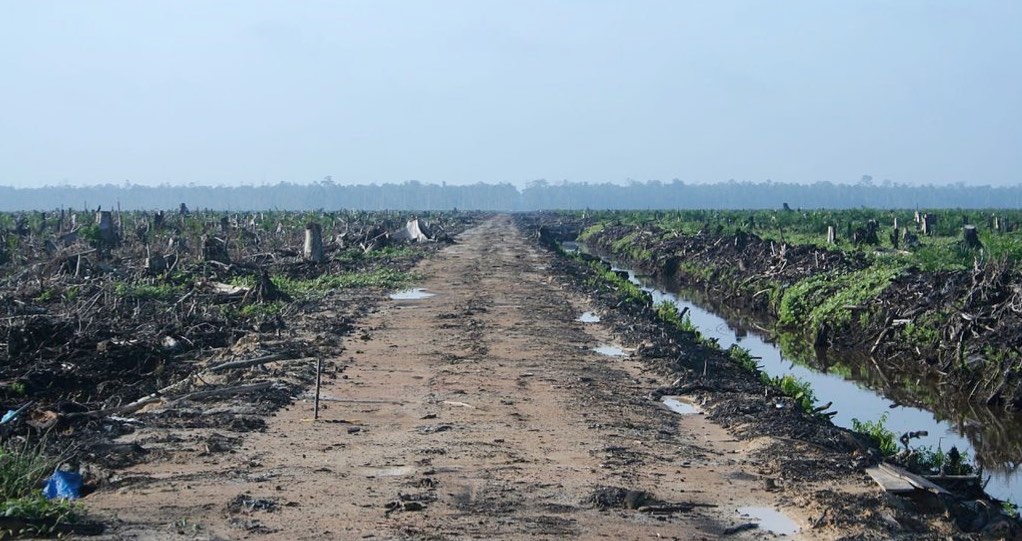
Photograph by Hayden Dagon, 2007. CC BY 2.0.
One approach to address deforestation is the introduction of sustainable palm oil production. Farmers are being taught environmentally sustainable methods to produce palm oil, as well as how to reduce their logging impact.4 Farmers are also being encouraged to plant in non-forested areas in the hope that the government will offer tax breaks and subsidies for their cooperation.4 The use of carbon credits could encourage the reduction in tree cutting. Carbon credits can be used by large industries that cannot reduce their own emissions. These industries pay money to people in other countries to protect forests, thus reducing the overall carbon dioxide in the world. REDD and RSPO are two different organizations that are helping to create a more sustainable palm oil industry, reduce deforestation, and by extension, save the orangutans. Rainforest reconstruction is an interesting solution that is currently being implemented in Borneo by microbiologist Willie Smits.9 Smits bought a former palm oil plantation and is working to restore the land to rainforest. His restoration efforts seem to be working because birds have already returned.9 Smits solution to deforestation demonstrates it is possible to restore the rainforest.
Another potential solution to help palm oil plantations become more sustainable is to increase their crop yields.5 Crop yields can be increased by planting mature plants instead of seedlings. A mature palm oil plant produces more oil than an immature palm oil plant. If farmers planted crops at maturity, and removed them after the plants reach their peak period, more palm oil would be produced and less land would be needed.8 Consumer pressure would also be beneficial to resolving the palm oil issue.10 Consumers may demand sustainable sourced palm oil if they realize that palm oil is used in most of the processed foods they eat, and its production is causing harm to the Sumatran rainforest and orangutans. If this occurs, producers would be forced to become sustainable to meet consumer demands.
Research has shown that deforestation in Sumatra, Indonesia is a chronic problem that is exacerbated as the worldwide demand for palm oil increases. Orangutans are losing habitat from deforestation to create plantations for palm oil production. By working towards more sustainable palm oil plantations, researching innovative techniques to mitigate deforestation, and by reducing global demand for palm oil, the Sumatran rainforest and orangutans can be saved.
References
- Gaveau, D.L.A., et al. (2009). The future of forest and orangutans (Pongo abelii) in Sumatra: predicting impacts of oil palm plantations, road construction, and mechanisms for reducing carbon emissions from deforestation. Environmental Research Letters 4, 1-11.
- Bradshaw, H. (2013, November 26). Sumatran orangutans: Meeting the refugees of the lost rainforest. BBC News.
- Watts, J. (2013, October 14). The devastation of Indonesia’s forests. CNN World.
- Pin Koh, L. & Wilcove, D.S. (2007). Cashing in palm oil for conservation. Nature 448, 993-994.
- Nantha, H.S. & Tisdell, C. (2009). The orangutan-oil palm conflict: economic constraints and opportunities for conservation. Springer 18, 487-502.
- Walsh, B. (2011, March 7). Palm oil plantations equal deforestation. Time.
- Beukering, P.J.H.,et al. (2003). Economic valuation of the Leuser National Park on Sumatra, Indonesia. Ecological Economics 44, 43-62.
- Pin Koh, L., et al. (2011). Remotely sensed evidence of tropical peatland conversion to palm oil. PNAS 1-6.
- Little, J.B. (2008). Regrowing Borneo, tree by tree. Scientific American 18, 64-71.
- Gilbert, N. (2012). Palm-oil boom raises conservation concerns. Nature 487, 14-15.
- Bogor, Java. (2010). Sumatran Orangutan (Pongo abelii). [Photograph]. Retrieved from FlickrCommons. CC BY-NC-ND 2.0.
- Anonymous. (2014). [Diagram of World Map]. Retrieved from Wikimedia Commons. Public Domain.
- Schroter, Udo. (2010). [Diagram of Sumatran Orangutan range map]. Retrieved from Wikimedia Commons. Public Domain.
- Hume, Greg. (2012). Sumatran Orangutan. [Photograph]. Retrieved from Wikimedia Commons. CC BY-SA 3.0.
- oneVilliage Initiative. (2008). Palm oil production in Jakwa Villiage, Ghana. [Photograph]. Retrieved from Wikimedia Commons. CC BY-SA 2.0.
- Dragon, Hayden. (2007). Oil Palm Concession in Riau, Samatra. [Photograph]. Retrieved from Wikimedia Commons. CC BY 2.0.
